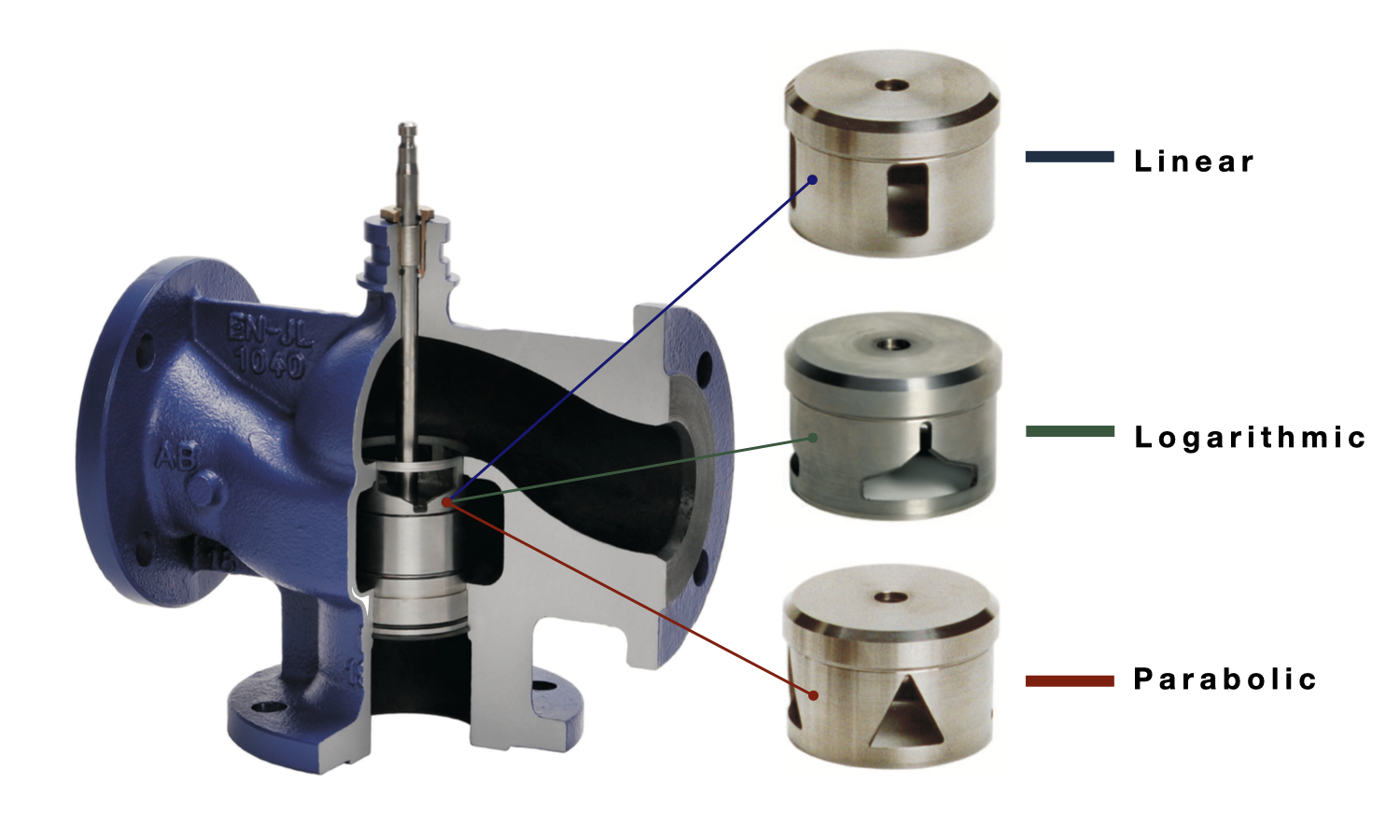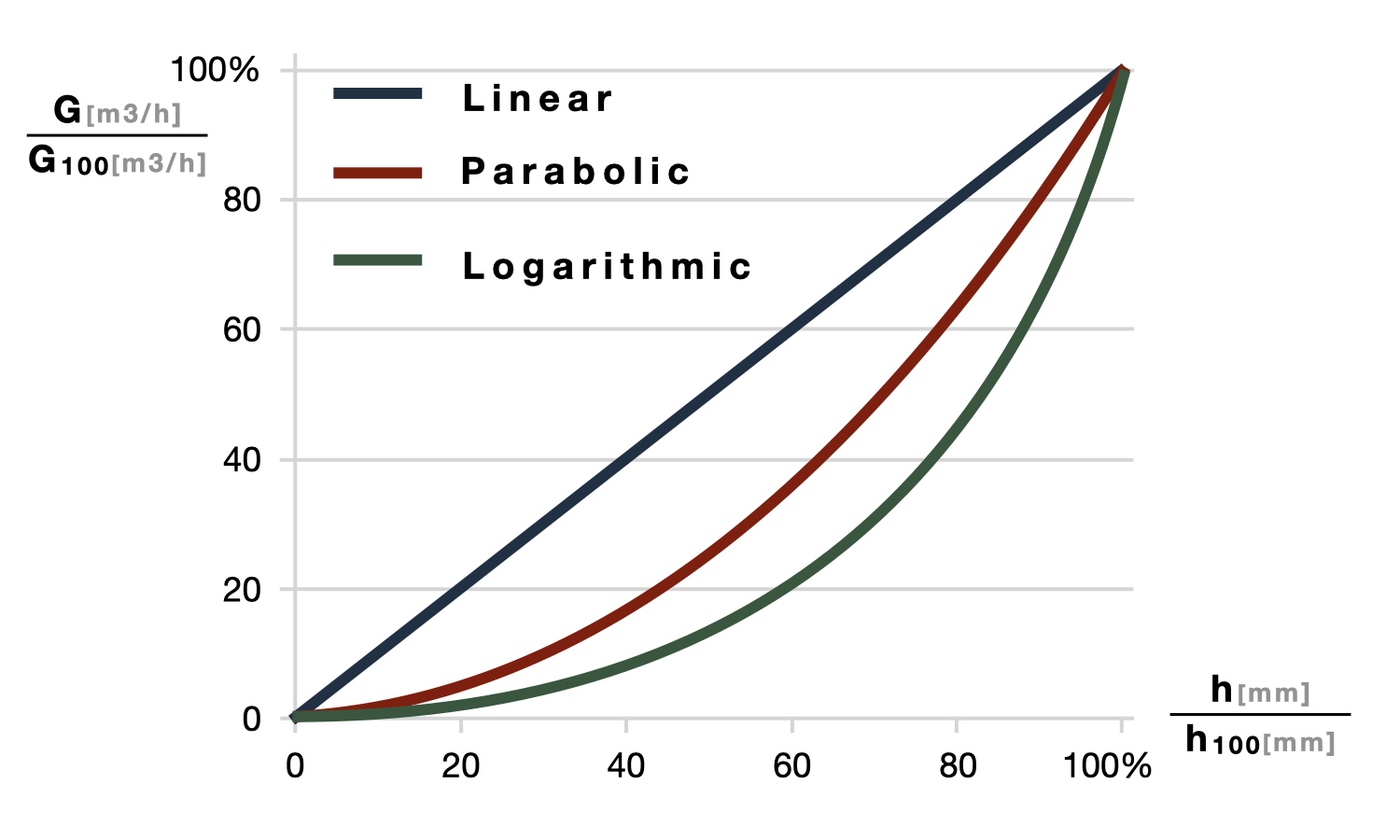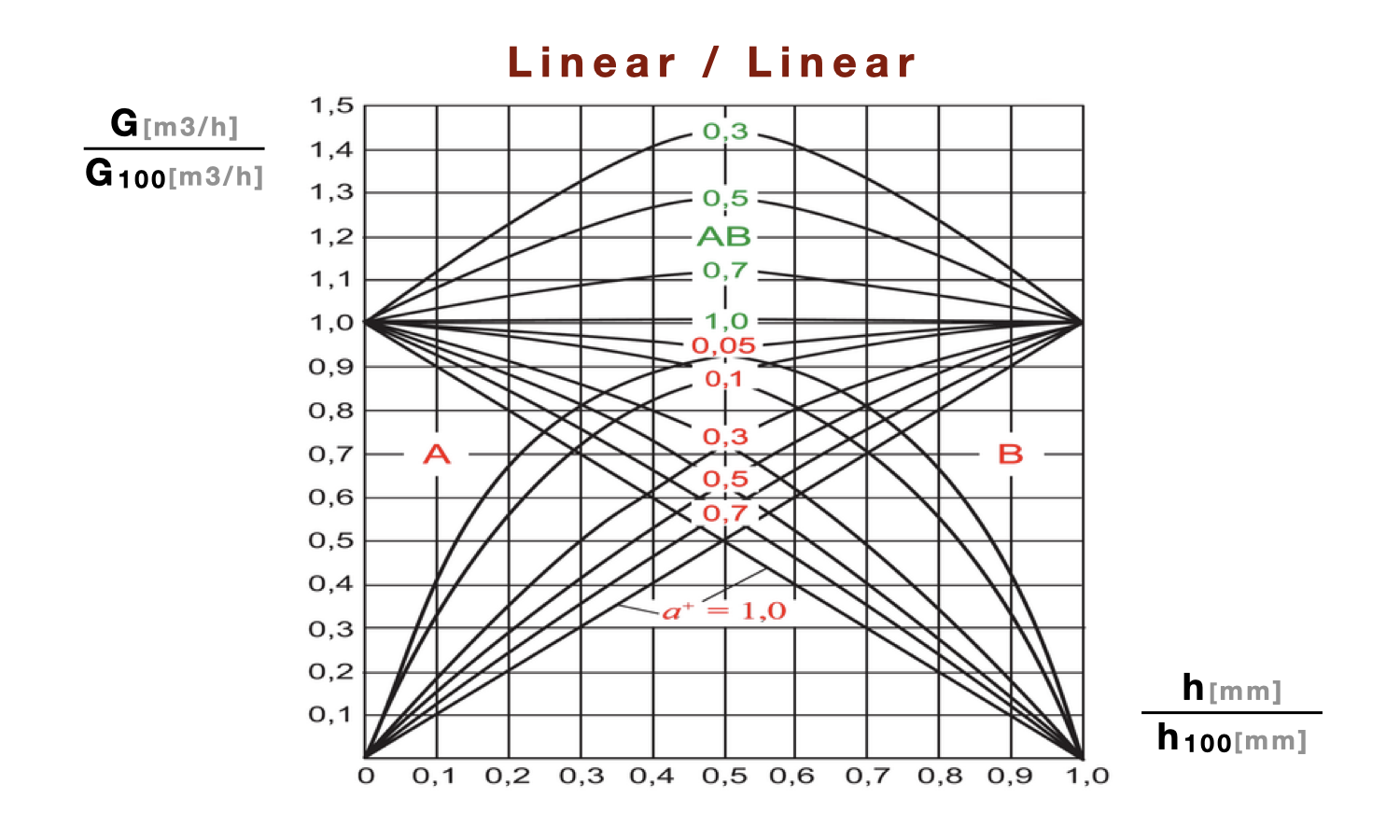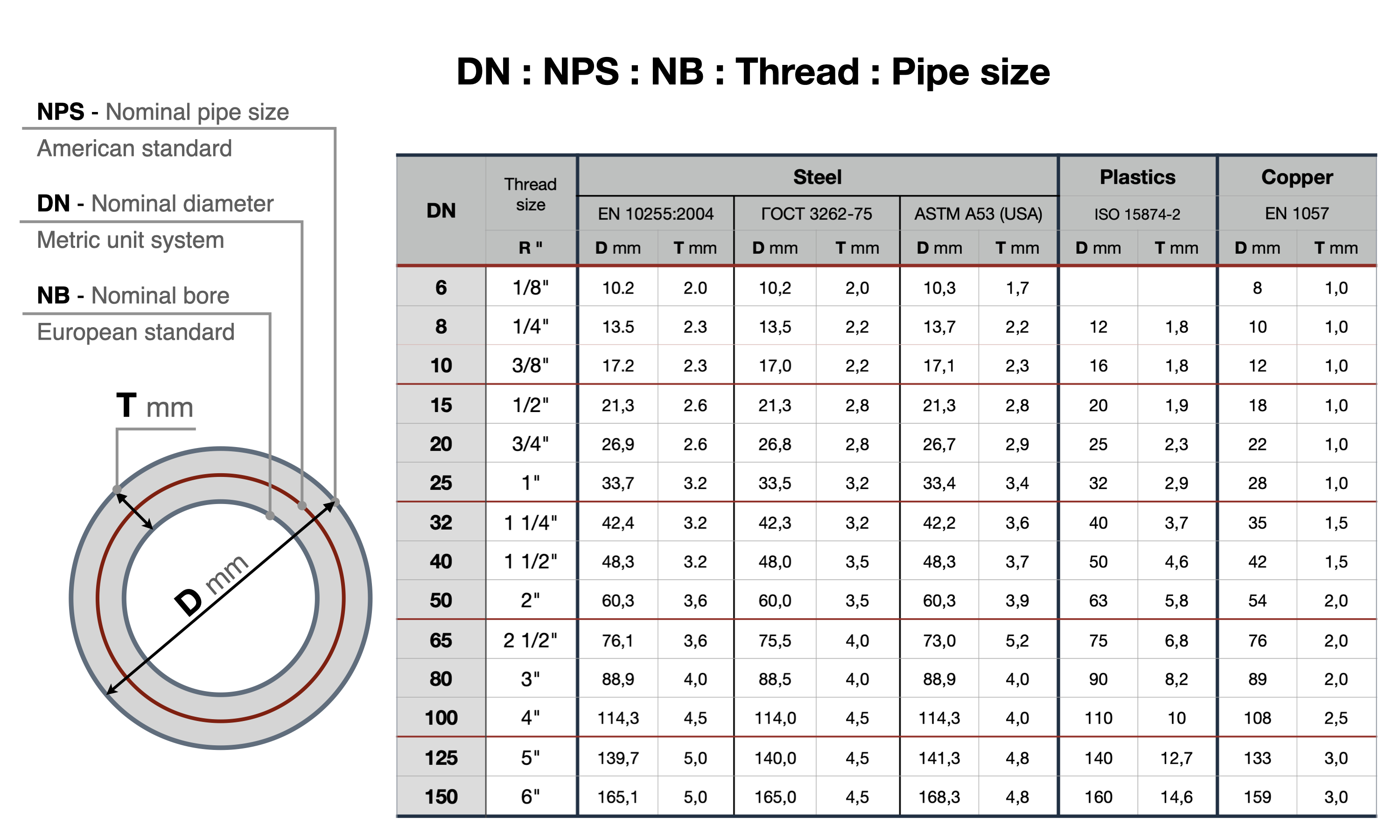Please do not block ads on our site. Clicks on ads help us exist, grow and become more useful for you!
Technical specifications of three-way valves
Kvs coefficient of a three-way valve - is a value numerically equal to the water flow rate through the valve in m³/h at a temperature of 20°C, at which the pressure drop on the valve is 1 bar. Usually, the values of the Kvs coefficient for the A-AB and B-AB ports of a three-way valve are the same.
Dynamic range of regulation - is the ratio between the maximum flow rate of the regulating valve at fully open position (Kvs) and the minimum flow rate (Kv) at which the declared flow characteristic is maintained. The dynamic range of regulation is also called the regulation ratio.
For example, a regulating valve with a dynamic range of regulation of 50:1 at Kvs=100 means that the valve can control a flow rate of 2m³/h while maintaining its flow characteristic.
Most regulating valves have dynamic ranges of regulation of 30:1 and 50:1, but there are valves with very good regulating properties whose regulation range is 100:1.
Authority of a three-way valve - is the ratio of pressure drop on the valve to the total pressure drop on the valve and the controlled section. The authority value for three-way valves determines the range of fluctuations in the total flow rate through port AB.
A 10% deviation of instantaneous flow rate through port AB during the movement of the valve stem is provided at the following authority values:
- A+ = (0.8-1.0) - for a valve with linear/linear characteristic.
- A+ = (0.3-0.5) - for a valve with logarithmic/linear characteristic.
- A+ = (0.1-0.2) - for a valve with logarithmic/logarithmic characteristic.
For three-way valves, the authority is determined for each of the two circulation loops that pass through the A-AB and B-AB ports.
Flow characteristic of a three-way valve reflects the dependence of the relative flow rate through the valve on the relative stroke of the regulating valve at a constant pressure drop on it. The type of flow characteristic determines the shape of the valve-seat pair.
Linear flow characteristic - equal increments of the relative stroke of the valve cause equal increments of the relative flow rate.
Logarithmic flow characteristic - the dependence of the relative flow rate increase on the relative stroke increment is logarithmic.
Parabolic flow characteristic - the dependence of the relative flow rate increase on the relative stroke follows a quadratic law (passes along the parabola).
Since a three-way valve has two valves and two seats - it also has two flow characteristics, the first is designated as the characteristic of the direct stroke - (A-AB), and the second is for the perpendicular stroke - (B-AB).
Linear/linear. The total flow through port AB remains constant only at a valve authority of 1, which is practically impossible to achieve. A three-way valve with an authority of 0.1 will result in fluctuations in total flow when the stem is moved within the range of 100% to 180%. Therefore, linear/linear valves are used in systems that are insensitive to flow fluctuations or in systems with a valve authority of at least 0.8.
Logarithmic/logarithmic. Minimal fluctuations in the total flow through port AB in three-way valves with logarithmic/logarithmic characteristics are observed at a valve authority of 0.2. Reducing the authority compared to the specified value increases the total flow through port AB, while increasing it decreases the total flow. Flow fluctuations in the range of authorities from 0.1 to 1 range from +15% to -55%.
Logarithmic/linear. Three-way valves with logarithmic/linear characteristics are used when different laws of regulation are required in circulation circuits that pass through ports A-AB and B-AB. The stabilization of the flow during the movement of the valve stem occurs at a valve authority of 0.4. Fluctuations in the total flow through port AB in the range of authorities from 0.1 to 1 range from +50% to -30%. Regulating valves with logarithmic/linear characteristics have been widely used in control units of heating systems and heat exchangers.
DN of three-way valve - this is the nominal diameter of the opening in the connecting ports. All three ports of the valve have the same nominal diameter. The DN value is used to standardize the sizes of pipeline fittings. The actual diameter of the opening may differ slightly in either direction.
PN of three-way valve - this is the nominal pressure - the maximum excess pressure of the working medium with a temperature of 20°C at which long-term and safe operation is ensured.
question : comment : feedback
584












 Tutorial Belimo
Tutorial Belimo Catalog of
Catalog of 
